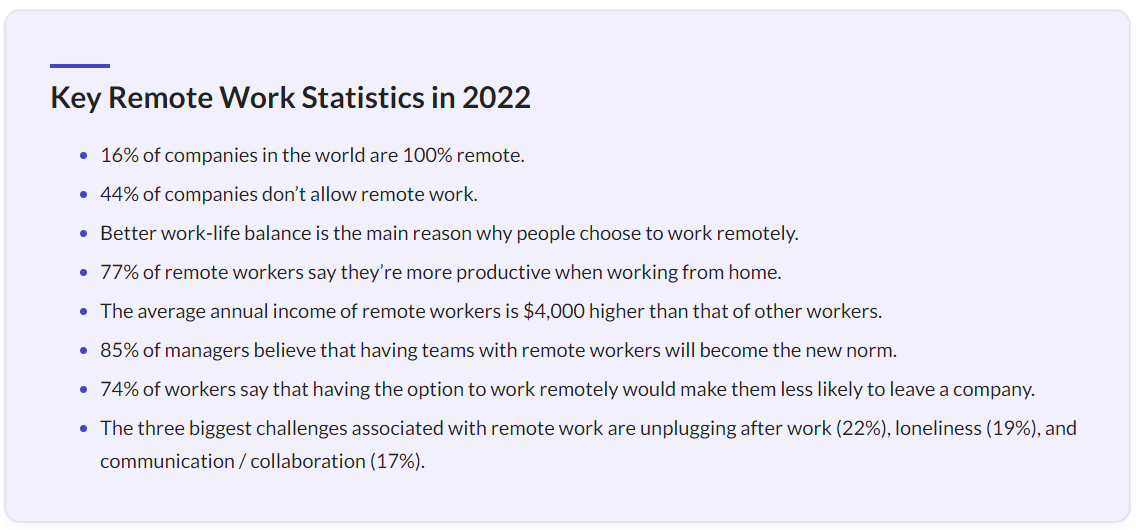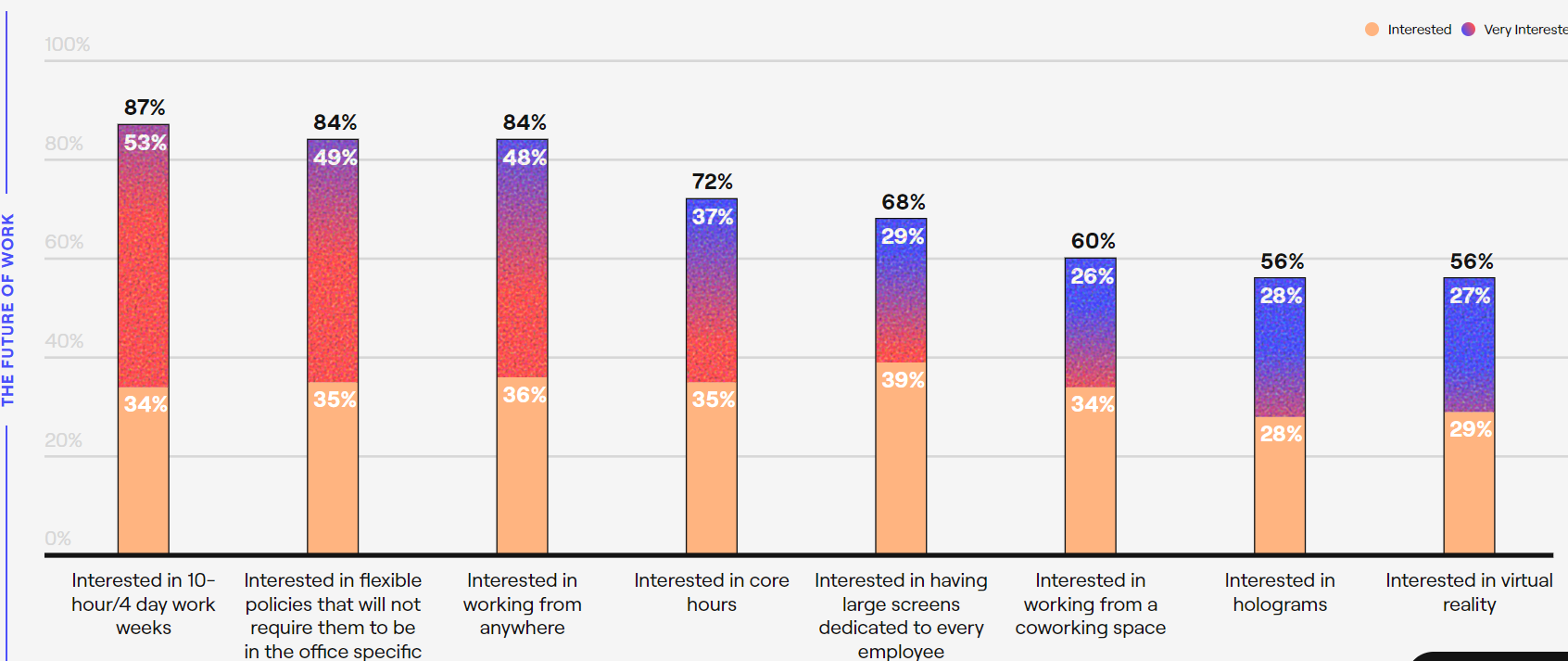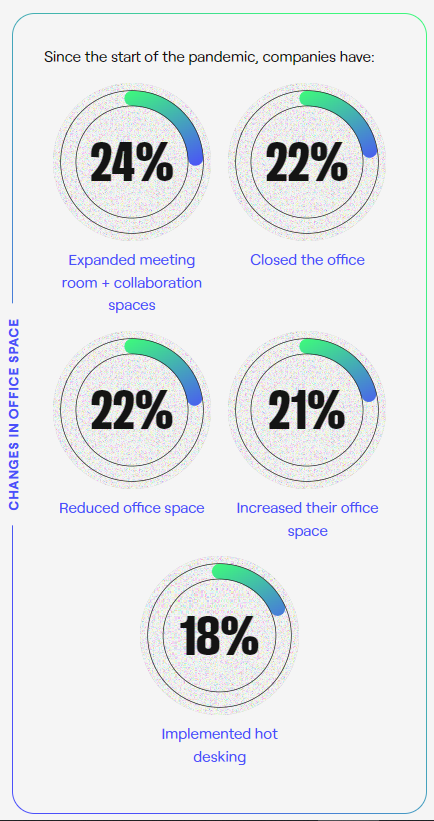If I were to summarize the new decade so far, I would say "Balance." Using myself as an example, I have had to redefine what I am willing to sacrifice; time to think has become crucial. Self-care is now at the top of my list, along with a flexible work environment. I have realized how vital personal relationships are.
Recently the world was told that there is yet another variant of Covid-19, Omicron, on the rise. Omicron, like its name, will bring us to more record-breaking numbers around the world. As we brace ourselves for the Covid continuation in 2022, people in many parts of the world are examining how they look at work and their careers. With the onset of Covid-19, the world saw people working at home and remotely. While the initial shock of changing gears from working in the office to home may have been welcomed or unwelcomed depending on the person, no one expected the new working situation to stay in effect for years. Workers are now becoming more reflective than ever and asking themselves the question, "What do I want?"
2020 sped up the growing need for a revolution in how we work in society. Technology makes it easier to work anywhere in the world. According to Global Workplace Analytics, the number of people who work from home has risen by 159% since 2009. Technology continues to drive and bring society closer together, and it is predicted that by 2028 73% of all teams will include remote employees.
With such significant shifts in the way we work taking place in the next six years, the role of leadership becomes crucial to review. It is becoming clear to companies that they must start preparing now, and the people in leadership positions will need to adjust to sustain success for their organizations.
As we start anew in 2022, let’s look at leadership since leaders across the globe influence how people see the world and their place within it.
To understand the dynamics of leadership, leaders, and the remote working world, I reached out to Dr. Henry Cooper. He is the founder of Leadership Matters More, a consulting business that helps reshape workplace culture. He advises organizations and their leaders on creating a motivating, engaging, and knowledge retaining workplace and workforce. As an expert in organizational development, Dr. Cooper also shares his knowledge as a business professor at Grand Canyon University in Arizona and as an online professor for Centura College in Virginia. Dr. Cooper’s courses and research focus on Business management and operations, Strategic Management, and Leadership and Organizational Development.
My Interview with Dr. Henry Cooper
What does authentic leadership in an organization look like?
Real leadership in an organization looks precisely like an individual (or group/department/section) that consistently shares, sets, and lives the company vision. Please hear me as I say that authentic leadership and real leaders are not necessarily in 'roles,' but they are known, they are listened to, and they are viewed by those followers choosing to buy into the company vision and goals to separate themselves in their achievements, and organizational or company success.
Therefore, real leadership is a living, breathing feeling of a mutual desire to reach beyond the 'Title' of Leader into the soul of achieving something beyond the present. Real leaders present an image that followers and other organization members may 'identify' with. Real leaders must 'know' the goals required to achieve success and growth, but not sacrifice the least by increasing work hours or operational targets.
Setting realistic goals and surpassing them through shared teamwork will be rewarded and place the 'team' on a growth path with an upward trend. What that looks like varies from industry to industry. Still, it is doable, based on the team's perception about 'who' they choose to follow and the effort they then decide to reach the vision inspired by the leader; whether the leader is anointed by the organization or by the team. So, the answer is ‘real leadership’ looks like the chosen leader that the team will follow.
Do people need to lead differently in a remote work environment?
Remote work environments certainly bring with them specific challenges. They also identify another process in the organizational structure that requires addressing to get to that place where leadership crosses into virtual environments similar to on-ground or office operations. Hiring and 'Talent Management' are crucial to operationalizing and maintaining a wide-area workforce.
Since not everyone has the motivation and discipline to work in a remote setting, knowing when to take breaks, take a breather, check the latest scores, and work. It is easier to manage those individuals when a manager is present. A supervisor, or lead, is responsible for tasking, monitoring, and ensuring that people who require 'watching' are doing what they should and need to be doing.
Therefore, hiring individuals who are more motivated and inspired by the job and doing it well without an overseer frees up the office's capital, time, and other resources. In addition, this could potentially be offsetting salary raises for sustained performance, more paid time off (PTO), and work-life balance that the typical 9-5 office setting finds difficult to achieve.
A recent article called The Benefits and Challenges of Remote Work brings attention to the fact that some employees worry about career progression, and nearly 60% of managers feel remote work is robbing them of opportunities for informal leadership development, according to the Owl Labs survey. Remote team-building efforts and one-on-one discussions on career development are critical for the well-being of employees and the organization's long-term growth.
This drive for career progression and stability has caused many employees to start job searching in what is now called the great resignation.
What is the great resignation?
The 'great resignation,' or the 'Big Quit' defines a continuing trend of employees voluntarily leaving their jobs. It is in response to the pandemic as it began shortly after Covid-19 layoffs and hour reduction. However, to buy into that argument belies the undercurrents of what is potentially at the root cause of this unprecedented occurrence. What we saw was people who were out-of-work through 'no fault of their own primarily because employers began losing profit.
The feelings generated by the recognition these employees began to experience now resonated with employers. Now that those companies envision a return to profitability, they want and expect employees to return to work at the same pay rate. There are no guarantees that the employer will care for them in similar circumstances should another catastrophic event occur.
Why are people leaving the workforce?
They do not feel valued, nor their contributions, hard work, nor goal achievements stopped them from being released when corporate earnings were at stake.
According to Fast Company, Some 4 million people quit their jobs in April 2021. But the spike in the quit rate is partly due to pent-up demand after two years of employees sitting tight during a volatile economic environment. We're also relatively on-trend concerning the rising quit rate over the last decade.
The Great Resignation assumes that as many as 95% of the workforce is considering leaving their organization. It’s important to note that considering is not the same as leaving, and the fact that employees have an eye out for new opportunities has been the norm since LinkedIn became a household name.
In the same article, Fast Company highlighted the top five reasons most likely to cause an employee to begin an active or passive search:
Financial needs: The compensation is not competitive.
Work–home balance: The work is so demanding you don’t have enough time or energy left to enjoy non-work activities.
Remote work policies: Misalignment in remote work preferences and organizational policies.
Current job disinterest: You don’t like the day-to-day tasks of your job.
Concern about job and organization stability: You are worried your job might go away.
What are people looking for in a job these days?
Employees' emphasis on 'how much they earn' is a clear indicator that trust in organizations is gone. On the arrival of the pandemic, companies dropped employees in their tracks—no concern for employee welfare, housing, or families. Most companies just dropped them as they guarded their bottom line, so it appears that employees are taking the bull by the horns and demanding wages that allow them to prepare for the 'next' disaster on their terms.
How has the pandemic changed the expectations of work?
The pandemic has elevated people’s fears related to virus exposure; according to studies from the Pew Research Center, 70% state that their jobs could be done from home. Approximately 25% of workers stated that they were less satisfied with their jobs than pre-pandemic. It is safe to say that this issue is part and parcel of the "Big Quit" and will play out in our organizations for quite a while in both our near and distant future.
90% of employees who worked from home during the pandemic said they were as productive -- or more -- working remotely compared to the office. 84% of employees also shared that working remotely after the pandemic would make them happier, with many even willing to take a pay cut. (State of Remote Work 2021)
Do you feel the pandemic changed what people value?
The pandemic has created the atmosphere of a 'highly emotive state' for many across the globe. We struggle to wrap our arms around rapidly changing technology, deepening economic inequality, and rising social consciousness.
How can leaders prepare for success in the remote work world?
Take time and stock in their teams. Enhance communication, ensuring that each level of the organization is informed and capable of exploring and expressing a wide range of ideas about the company.
It reminds me of 'kaizen’ in Japanese continuous improvement, where ‘the organization gradually improves productivity by involving all employees and making the work environment more efficient.
Kaizen translated as 'change for the better, combined with employment for life, paid custom vacations, and mutual respect between employee and leadership. Adaptation of processes similar to ‘Kaizen’ may revitalize leadership structure and achievement because the leader does not have all the answers all the time.
What are the challenges that leaders will face in this new working environment?
Learning how to display, communicate, and authentically demonstrate that the 'team' is, in fact, a team. If an employee’s parent suffers, the employee suffers; when their spouse suffers, the employee suffers. This common-sense approach to relationship development and maintenance is crucial to creating healthy and sustainable working environments now and in the future. When the employee does not feel cared for, they will not care, and organizational success and goals will fail.
Amazon recently defeated an attempt at unionization at an Alabama plant. Time will tell if the changes employed into the workforce to prevent unionization are maintained or forgotten because employees 'talk to the board' with their feet, they leave. The disruption lasts for quite a while.
Echoing Dr. Cooper's sentiments, an article in Forbes called Empathy is the Most Important Leadership skill notes; empathy has always been a critical skill for leaders. Still, it is taking on a new level of meaning and priority. Far from a gentle approach, it can drive significant business results.
Many always knew demonstrating empathy is positive for people, but new research shows its importance for innovation to retention. Great leadership requires a fine mix of all kinds of skills to create the conditions for engagement, happiness, and performance, and empathy tops the list of what leaders must get right.
How has leadership changed?
The leadership needle has moved from autocratic to collaborative. Whether we prefer transformational, servant-leader, laissez-faire, affiliative, democratic, coaching, leadership has become more team-based. We can trace the inroads that ‘sporting teams’ have on our society, whether football, basketball, baseball, soccer, or the Olympics. Leaders' approaches to the outcomes are equated to developing a cohesive unit, where roles are defined and executed to deliver results.
What will be required of employees and employers in this new way of working?
This question is and will be a work in progress. Evidence has shown that many employers are reluctant to adapt and (trust) their success to employees they do not control. As employees grasp that they are not trusted to do their jobs without someone watching, reporting, and assigning, they have begun to express their dissatisfaction in a way like the "Big Quit."
How can companies and organizations attract top employees?
This one has not changed, pay them well, treat them fairly, and engage in the type of exchange between leader and follower/employee that demonstrates value, respect, and ‘real’ teamwork.
What type of person makes a great leader?
There are many responses to this question, though it would be integrity if I had to select one. However, once it is lost, it can't be found again. Leaders and others talk about regaining their integrity when they really want to regain their power. If they'd valued their integrity, to begin with, it would have never been lost.
How will the dynamics in companies change in the future?
While difficult to say as my crystal ball is no clearer than another person, when we look at the environment, our human reactions to change, and the elevation of intolerance in our society, especially in our workforce, we must assume that change is vital. We cannot continue doing business the same way we did for the past 100 years because everything about the world has changed.
While we hit the inflection point where EV's appear to catapult us into a new reality, the matter of fact is that we still maintain the connection to 'fossil fuels' as the primary source of electric production. Companies must begin seeking new ways of changing, spreading, and accepting change as a standard business opportunity. We've all been exposed to the adage that "We've always done it that way," instead of seeing change as a necessary organizational growth function.
What is something about leadership that most people don’t know?
One of the most surprising things people don't know about leadership is that followers or employees are generally neutral towards their organizational leadership until leadership 'reaches' them. The Vertical Dyad Linkage Theory is a theory that deals with the individual, dyadic relationships formed between leaders and their subordinates. It is also widely known as The Leadership-Member Exchange (LMX) Theory. Initially, the theory was developed by Fred Dansereau, George Graen, and William J. Haga in 1975. These relationships typically go through a 3-stage process related to their leader, a supervisor, or manager in the organization. The phases are Role-Taking, Role-Making, and Routinization.
The theoretical construct is labeled Leader-Member Exchange Theory. Whether one identifies with an 'in-group' or an 'out-group' within the dyadic process, the evidence within the research identifies ways that leaders can more directly interact with, grow, and motivate their employee-followers. Still, followers may become much more attuned to the elemental 'value' they bring to the organizational construct, which leads to growth in the individuals involved, but positioned and molded properly, reaching organizational goals to mutual benefit.
About Dr. Henry Cooper
Dr. Henry Cooper is a business professor at Grand Canyon University in Arizona and an online professor for Centura College in Virginia. Dr. Cooper’s courses and research focus on Business management and operations, Strategic Management, and Leadership and Organizational Development. In addition, Dr. Cooper has been a business consultant for almost 19 years, helping healthcare service providers give better service to patients by having more strategic operating plans and systems in place. His most recent publication, LMX Quality, Organizational Commitment, and RN Turnover Intention: A Correlational Examination of Leader Exchange Influence, looks at leadership's role in employee retention.
About the Author
Annmarie Hylton-Schaub, Head Marketing Strategist and Content Developer at Project Good Work, a boutique marketing group focused on helping individuals who want to launch social impact projects, charities, and change-making initiatives. The marketing group works to develop branding, marketing strategy, and content to connect clients with the people who believe what they believe so that their project and business can thrive.
If you have a passion for an unserved community, a social justice problem, or want to change minds, contact Project Good Work at ProjectGood.Work to start your project of change today.





